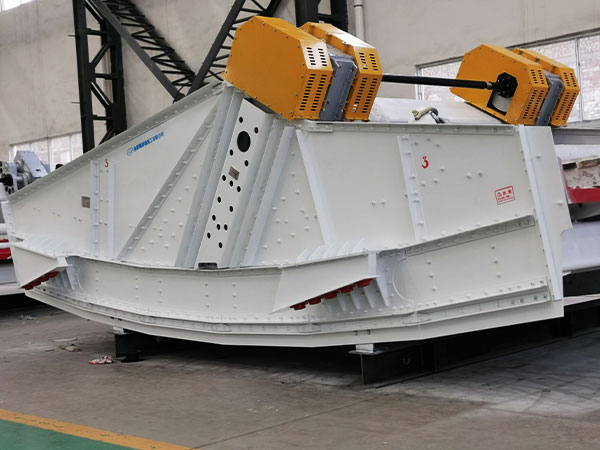What is the reason for the high noise of linear vibrating screen?
High noise levels in linear vibrating screens can be problematic, affecting both the working environment and the longevity of the equipment. Here are some common reasons for high noise in linear vibrating screens and potential solutions.
Reasons for high noise of linear vibrating screen

1. Loose or Worn Parts
Reason:
Loose bolts, worn-out bearings, and other components can cause excessive vibration and noise.
Solution:
Regularly inspect and tighten all bolts and fasteners.
Replace worn-out bearings and other components promptly.
2. Poorly Designed or Maintained Springs
Reason:
Springs that are not properly designed, installed, or maintained can lead to uneven distribution of vibration and increased noise levels.
Solution:
Ensure that the springs are designed to handle the load and vibration frequency.
Check the condition of the springs regularly and replace them if they show signs of wear or damage.
3. Imbalance in the Vibrating Motor

Reason:
An imbalance in the vibrating motor can cause uneven vibration and increased noise.
Solution:
Balance the motor by adjusting the counterweights or replacing the motor if necessary.
Regular maintenance checks can help identify imbalances early.
4. Inadequate Damping
Reason:
Insufficient damping materials or mechanisms can result in higher noise levels as vibrations are not adequately absorbed.
Solution:
Add or improve damping materials such as rubber pads or isolation mounts.
Use sound-absorbing materials around the screen structure.
5. Excessive Feed Rate
Reason:
Feeding material at a rate higher than the screen’s designed capacity can cause excessive vibration and noise.
Solution:
Adjust the feed rate to match the screen’s capacity.
Use feeders to ensure a consistent and controlled feed rate.
6. Improper Installation
Reason:
Incorrect installation can lead to misalignment and increased noise levels due to excessive vibration.
Solution:
Ensure the vibrating screen is installed on a flat, level surface.
Follow the manufacturer’s installation guidelines carefully.

7. Resonance
Reason:
Operating the vibrating screen at or near its natural frequency can cause resonance, leading to high noise levels.
Solution:
Adjust the operating frequency to avoid resonance.
Redesign the system to alter the natural frequency if necessary.
8. Structural Issues
Reason:
Cracks or weaknesses in the structure of the vibrating screen can amplify noise.
Solution:
Inspect the structure regularly for cracks or signs of fatigue.
Reinforce or repair structural components as needed.
9. Poor Lubrication
Reason:
Inadequate lubrication of bearings and other moving parts can increase friction and noise.
Solution:
Implement a regular lubrication schedule.
Use the correct type of lubricant for the bearings and operating conditions.
10. Contact Between Metal Parts
Reason:
Metal-to-metal contact can generate significant noise during operation.
Solution:
Ensure proper clearances between metal parts.
Use rubber or plastic components in areas where metal-to-metal contact occurs.
Summary
To reduce noise levels in linear vibrating screens:
Regularly inspect and maintain all components, especially bearings and springs.
Ensure proper installation and alignment.
Use adequate damping and sound-absorbing materials.
Control feed rates and avoid resonance frequencies.
Lubricate moving parts appropriately.
By addressing these factors, the noise levels can be significantly reduced, leading to a quieter and more efficient operation.



